I Feel Like I Should Just Add On To This With A Not-really-related Fact That Someone Is Going To Have
I feel like I should just add on to this with a not-really-related fact that someone is going to have to clarify. I read a long time ago(during a time when I had the want to actually do stuff instead of just sleep, blow off online school, almost ignore my homework, eat ice cream and watch tele while saying “fuck you” to the world) that, somewhere not in the states, they stopped treating addiction like a crime and more like something that needed to be helped, like a mental disorder or something. If you had a certain amount, then you would meet with two people, I don’t remember what they were. A social worker and a lawyer, maybe. This is why I need someone to fill in the ever present blanks. The drug rate or whatever dropped astoundingly.
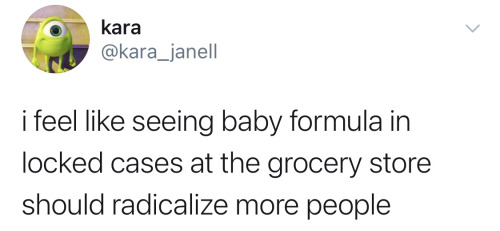
More Posts from Ancientbruisesbrokenruses and Others
So You Want Your OC to be Jewish
So you’re writing a story and you want to make a Jewish character—great! I’m here to help. I always want more Jewish representation but I want good Jewish representation, so this is my attempt to make a guide to making a Jewish character. What are my credentials? I’m Jewish and have been my whole life. Obligatory disclaimer that this is by no means comprehensive, I don’t know everything, all Jews are different, and this is based on my experiences as an American Jew so I have no idea, what, if any, of this applies to non-American Jews.
If there’s anything you want me to make a post going more into detail about or if there’s anything I didn’t mention but you want to know please ask me! I hope this is helpful :) Warning, this is long.
Keep reading
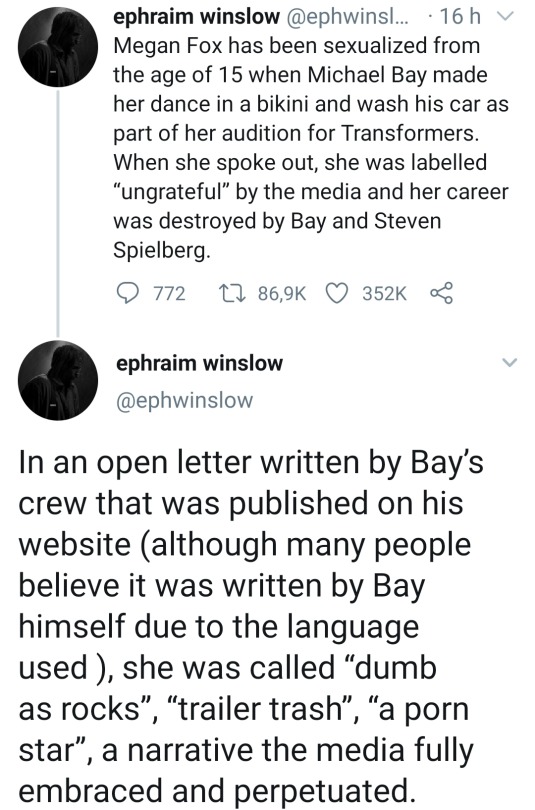






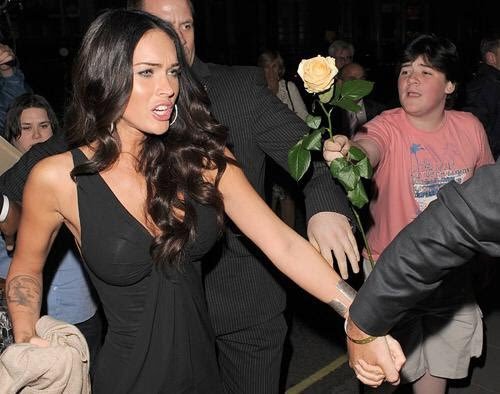

A career for a career - Megan Fox deserves to have hers back. Michael Bay deserves to be blacklisted, something he had no problem doing to her when she exposed him for his awful, predatory behavior.
How I Plan...
Building a story or series from the ground up with the help of templates!
This is how I approach planning. It covers what I do up to the point of opening a blank document and typing the first word.
Despite the tags this isn’t going to be ‘how to’ or advice based because who am I to tell you how to plan a story? This is only an option:) I engourage you to steal liberally but also question whether or not this method will work for you. If you don’t vibe with something, throw it out!

*you don’t have to answer these questions in order.
STRUCTURE LEVEL
Genre/Sub-genres: Picking a genre can help you find ideas/tropes faster. If you’ve written or read a book before you probably know the types of stories you like.
Age Category: This can help you find themes for you story. I like to sepate genre and cataegory since you can have a young adult or an adult romance.
Point Of View: Pick who will tell the story. Will there be more than one?
Tense: First, second or third person? Past or present?
Formatting: How will the story be split up? Through chapters or parts. I also like to put whether or not I’ll have a playlist, any quotes or epigraphs, prologues or epilogues, anything like that.
Tone: Will your story be serious, light hearted, sad, satirical...etc
Atmosphere/Color palette: I like to use this for when I’m writing description. Using specificities to elevate your writing can bring a world together and make it feel real.
Overall Concept: As vague as you’d like it to be! I usually give a few sentences.
Comparison Titles: I love to use comparison titles in the beginning when nothing has been solidified. It helps me know what came before me while still generating lots of inspiration.
SERIES LEVEL
Series Title: I usually base it off the first books title or a significant thing that links all the stories together.
Number of stories you want: I don’t always know how many stories will be in a series but it’s good to have a rough esimate of how many you’d like to write.
Number of stories realistically achievable: But we all know that sometimes an idea just isn’t sustainable for a 10 book series but works rather well as a trilogy instead.
Story that will kick off the series: All of your stories should fit a purpose in the series but this book will take the roll as a set-up (not to be confused as ‘filler’) for the rest of your series. It’s just something to have in mind when planning. This way you can plant twists and foreshadowing for the rest of the books.
Story that will close out the series: This story has big shoes to fill since you’ve probably been amping everything up to an explosive finish but at the end of the day it doesn’t matter if it’s bigger and better than what came before, it only matters if it’s a satisfying close to the whole series.
Summarize each story
Story # 1 summary ...you get the idea
Timeline: I like to know what year the series starts and when it will end. It might sound complicated but it’s so helpful. You don’t want a character to be pregnant or something for three books if the the stories have spanned more than nine months.
Spin-offs: You might find that you’ve got some ideas that don’t quite fit in with the others but they have some common elements. A spin-off is a cool way to explore those other ideas.
Naming conventions: I like to name my individual stories similar things to keep a theme. Example: J. R. Wards Black Dagger Brotherhood series has book titles with the word ‘Lover’ in them. There’s also naming conventions like the ACOTAR series by Sarah J. Maas that go “A Court of Blank and Blank”
SETTING LEVEL
Town/City/Village Name:
Area Description:
State/Province:
Country:
Common Weather:
Population:
Popular Figures:
Popular Locations:
Historical Background and Events:
What might the town be hiding to the average passer-by?
*You can definitely add more questions depending on your story. I write mostly within our world but I do like to create fictional towns.
CHARACTER LEVEL
Full Name:
Age:
Role:
Title/Rank/Occupation:
Wants:
Fears:
Misbelief:
Description/Faceclaim:
Personality Traits:
Zodiac Sign:
MBTI:
Theme Song:
Backstory:
Daily Life:
* Again, you can add any more questions you’d like to. These are just the ones I like to use to get going. Some of them are super vague, so in Daily Life I’ll put their living arrangement, transportation, pets or anything like that. I also add loads of stuff in their Description such as sexuality, how they dress, tattoos or scars, etc.
GROUP
*this is for anything like a fictional club, cult, company, evil organization or something like that.
Name:
Sub-divisions:
Type:
Founder:
History:
Current Leader:
Headquarters:
Current Operation:
Biggest Threat:
Biggest Allies:
Council Members (include roles):
Other Members (include roles):
STORY LEVEL
Working Title: Sometimes I use something concrete but if I need to get it out of the way I’ll put something like Project Black.
Estimated Length: Word or chapter count you’d like to achieve.
Order: Which book in the series is it?
Premise: I like to refer to this as the summary’s skeleton.
Tropes:
Subplot(s):
Story Summary:
Story Theme Song: This is just for fun but sometimes it really helps me capture what the whole story might be. I can also use it when I’m low on inspiration.
BEAT LEVEL
* I’d recommend googling an explanation of story beats or purchasing Blake Snyder or Jessica Brody’s book on Save The Cat beat sheet. But on the other hand, you don’t have to use a beat sheet at all. And if at any point during planning you feel like you’re ready to write then go for it!
Opening Image: An image that catapults your audience into the look and feel of your story
Theme Stated: Typically the theme of the story is communicated by someone fairly early on. This is dialogue spoken to the protagonist that he doesn’t quite grasp yet.
Set-Up: Show the protagonist in their “old world.” Let the audience know what the status quo is for them, then hint at the adventure that follows. This is also a time to introduce secondary characters.
Catalyst: Sometimes called the “inciting incident,” the catalyst is the event that disrupts your protagonist’s status quo. But they’re not ready to make the choice that catapults them into the story just yet.
Debate: This is where the protagonist has doubts about setting out on their perilous journey.
Break into Two: Inevitably, your protagonist will overcome their doubt and make a choice to set out on their adventure. This is the choice that sets the plot in motion. Your beat sheet will be filled with obstacles and twists resulting from making this choice from here on out.
B Story: A subplot ensues. Some would say that this is usually a romantic subplot.
Fun and Games: Plot structure requires a stretch where your protagonist wields their new power, and does cool stuff with it. I’ve also heard this referred to as the Promise of The Premise. So in Hunger Games by Susanne Collins this would be Katniss actually fighting in the games.
Midpoint: At some point, your protagonist will either get what they’re after... or not. But there will be consequences either way.
Bad Guys Close In: After your protagonist gets what they want, or not, there will be consequences. These forces will tighten their grasp, and throw the protagonist off balance.
All Is Lost: The dire circumstances your protagonist endures will lead to an inevitable loss. Which can be anything but it most commonly a character death.
Dark Night of the Soul: At this point of the Save the Cat beat sheet template, your protagonist has lost hope.
Break into Three: In plot structure, this is where your protagonist claws around in the darkness, only to find or remember something useful.
Finale: Treat the finale as the Act 3 summary. The Save the Cat beat sheet template is at its end, so it’s time for the protagonist to take on their foes. Armed with new tools and self-discoveries, the protagonist often synthesizes what they've learned (in Act 2) with values they've always had (Act 1).
Final Image: Along with the opening image, the final image creates the bookend that encapsulates the journey. This is the last thing the audience is left with.
*Closing thoughts: I have never used just a beat sheet because they don’t resonate with me for every story. I always add stuff or take away. I think there is a special beat missing between the Finale and Final image and that is where the characters slow down, take a breath and reflect on everything they’ve experienced. I also think Romance is the hardest genre to use the beat sheet with but I do a hybrid of the Beat Sheet from Save The Cat Writes A Novel! By Jessica Brody and Romancing the Beat by Gwen Hayes for the most part.
NOW JUST WRITE! :)
I hope this was helpful in some way or another! DM me or reply with any questions or for clarification. I have many more posts I’d like to create (on my process) but if you have any ideas or topics I should make posts on let me know.
Good luck and happy writing!
I would love that! Even if I don’t write straight romance, it’s always there. Edit: I mean totally romance, as in that’s the main genre. Though I don’t really write hetero couples except for parents… Tender Tuesday seems great and would totally check in for that. Though my WIP right now is about scandals and and bunch of shit(see the debutante series which is what inspired me, though it has a darker feel) so it does include more sexual stuff. They are hormonal teenagers by the way. Wedding Wednesday might be good for those of us who have wedding scenes in our romance. For example, my WIP(Historical romance ) that I haven’t touched in years it feels like, the ending scene was a wedding scene the last words being “i do”.
Romance writing
I’ve been wondering for a while that I could make an event for romance writers (that includes of course every other genre you have a WIP with a major romance line in) because I mainly see fantasy stories getting attention and maybe it would be nice to gather with like minded people. (I’m thinking something like World Building Wednesday or maybe Flash Fic Friday or possibly both, except these would be romance related) On the other hand maybe there are mainly only fantasy writers on Tumblr and that’s the reason for the lack of visibility of romance WIPs.
Either way, please reblog this if you’re a romance writer/other genre writer but would be interested in a specific romance ask game/flash fic prompts event and yeah, I will try to come up with something if there’s interest.
P.S.: Boost this, please, even if you aren’t interested, someone might be xx
This has made me think so much…and not entirely about my characters.
Writing Grief
I’ve heard from many places - and wholeheartedly stand by - the idea that the larger the scope you’re trying to portray, the smaller your focus should be. For example, if you’re writing about a village that’s been destroyed, you don’t focus on the destruction everywhere, you focus on a little child’s doll lying half-scorched in the street. The idea is to channel as much of the emotion as possible into the smallest details. That’s how it’s the most potent.
Grief is one of these big things. Grief rocks your world, and it’s grip doesn’t go away as soon as the next thing comes around. It strikes at odd moments.
The thing with grief is that everyone experiences it differently, and everyone’s got different memories surrounding it. Given this fact, I’m going to describe questions who’s answers you may incorporate into your narrative, but I cannot give you a “this is how to write your character’s grieving.” The questions I’ve listed below are likely going to be most relevant at or just after another character’s died, when things are freshest and at their most raw.
(note: “or” questions do not necessarily mean you have to choose one or the other. You can, but it’s also saying, “is at least one of these the case?”)
How does it feel externally?
Do things feel too rough, or too soft? Too squishy or too unyielding?
Are yoru character’s sleeves damp or wet from wiping away tears? are there balls of tissues held tight in your character’s fists?
Is the air too cold or too warm?
Is the space too tight, or too open?
How does it feel physically internally?
Is your character’s jaw clenched or their muscles tightened?
Do their eyes sting or feel puffy from tears?
Are they dehydrated and/or hungry?
Does their skin feel cold to the touch?
Do they crave physical contact such as hugs, or do they not want to be touched?
How does your character feel emotionally?
Are they angry, scared, sad, or unsure?
Do they feel emotionally empty like there is nothing inside of them (do they feel cold but aren’t physically cold)?
Are their thoughts coherant, or are they scattered?
What do they notice? Colors, shapes, patterns, sounds, movement, tactile sensations, smells?
Is your character craving a sense or normalcy, or a sense of difference that reflects the difference of someone dying?
How does your character physically react?
Do they start crying or showing other intense emotions?
Do they try to hold everything inside and/or not show other people?
Does their movement style change (they’re jerkier, slower, etc)?
Do they not seem to hear anything anyone else is saying?
Do they try to overcompensate and/or pretend that what happened didn’t really matter (showing intense emotions seemingly unrelated to grief)?
Wish I had this years ago. Could’ve saved me my mental health.
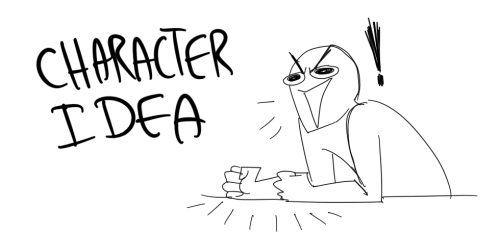
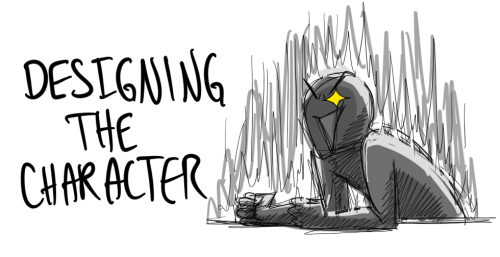
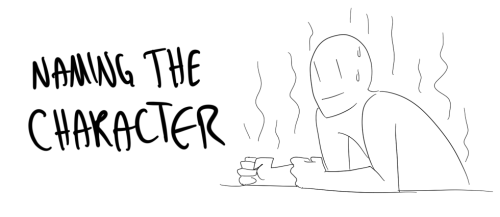
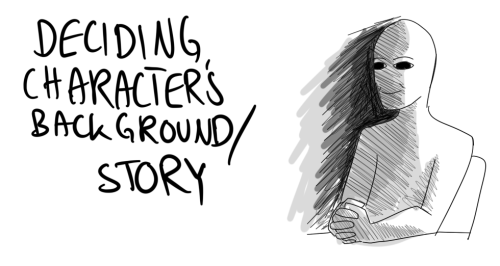
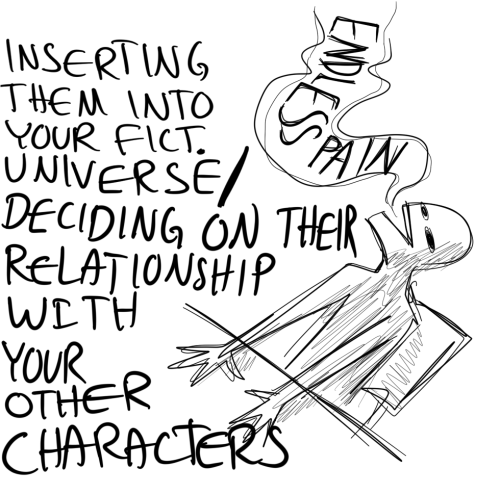
the suffering never ends
I didn’t even realise I did this. Almost subconsciously, it’s just the way my writing is. I thought it was normal…? Okay.
Hi, I'm rereading some of my work and I notice that most of the sentences start with a subject and it tends to get really annoying after a while. Any tips on other ways I could start my sentences?
How to Diversify Your Sentence Structure
This is a really common problem that I think a lot of writers have! Having a repetitive sentence structure without variation can make your prose really choppy, boring and difficult to read, while overall weakening your voice.
Here are some techniques to help you change things up a bit!
Switch around your subject
Very basic grammar: Every sentence has a subject and a predicate. I think when we think of subject in a sentence, we often think of person. This might be especially true in creative writing because we deal with characters.
For example:
Amelia opened her front door and walked outside. She felt a cold breeze blow through her. She realized that she wasn’t dressed appropriately for the weather. Amelia turned around and went back inside to grab a jacket.
In this example, Amelia is the subject of every single sentence, and a verb is followed immediately afterward. Because every sentence begins with ‘Amelia’ or ‘she’, there’s no variety and it’s a little bit boring to read.
Here’s what it could look like if I switched the subject around somewhere.
She felt a cold breeze blow through her.
A cold breeze blew through her.
The difference is subtle, but now the subject of the sentence is the breeze, not Amelia. The sentence structure is still the same: The subject is followed by a verb. However, because the subject is different from Amelia, it still brings variety to how your sentences read.
Here’s what it looks like now:
Amelia opened her front door and walked outside. A cold breeze blew through her. She realized that she wasn’t dressed appropriately for the weather. Amelia turned around and went back inside to grab a jacket.
Now that every sentence doesn’t begin with “Amelia” or “she” it seems a little bit more interesting.
Put dependent clause before subject
So we changed one subject in a sentence, but we still have multiple sentences that have Amelia as the subject. It still doesn’t have too much variety in sentence structure, and as a result, it can be stilted.
So let’s try bringing a dependent clause before the subject.
She realized that she wasn’t dressed appropriately for the weather. Amelia turned around and went back inside to grab a jacket.
Realizing that she wasn’t dressed appropriately for the weather, Amelia turned around and went back inside to grab a jacket.
By bringing ‘realizing’ before the subject, I created a dependent clause and succeeded making the first word something other than the subject.
However, because it’s a dependent clause, ‘realizing that she wasn’t dressed appropriately’ is a sentence fragment — it’s an incomplete thought. So I combined it with the last sentence to make it complete.
So after those two techniques, let’s compare the original with the rewrite.
Original
Amelia opened her front door and walked outside. She felt a cold breeze blow through her. She realized that she wasn’t dressed appropriately for the weather. Amelia turned around and went back inside to grab a jacket.
Rewrite
Amelia opened her front door and walked outside. A cold breeze blew through her. Realizing that she wasn’t dressed appropriately for the weather, Amelia turned around and went back inside to grab a jacket.
Now because there’s a variety in sentence structure and subject, the paragraph is not only more interesting to read, it also flows better and more smoothly. It also has the added bonus of diverse sentence lengths which was lacking before, and it helps make the writing more engaging.
I just wanted to note: there is nothing bad about having your subject as the first word in a sentence. I don’t want anyone to feel like they have to change every single sentence they ever wrote. Like in my example, the first sentence starts with Amelia. That’s fine.
The problem is that when every single sentence starts that way, it becomes repetitive. You can still have some sentences that start with your character, just make sure to throw in some other sentence structures, and your writing will be more engaging!
Outside of this specific example, you can also try playing around with dependent clauses in your existing sentences as well.
Jamie walked into the haunted house, despite her reluctance.
Despite her reluctance, Jamie walked into the haunted house.
The sentence is the exact same, but I just switched around where the dependent clause ‘despite her reluctance’ is placed. Even though it has the same meaning, it can provide a different feel or at the very least, switch up having your subject as the first word of every sentence.
I also talk about this in my guide about how to make your writing flow better. Sentence structure has a lot to do with making your writing sound cohesive and eloquent, so I would definitely recommend checking that out as well!
Thanks so much for asking Anon, I definitely struggled with this too when I was just starting out. I remember seeing how every single paragraph started with a name, and that was really annoying me, but I had trouble figuring out how to fix it. I hope this helped!



DON’T FORGET THIS APPLIES TO PEOPLE!!!!

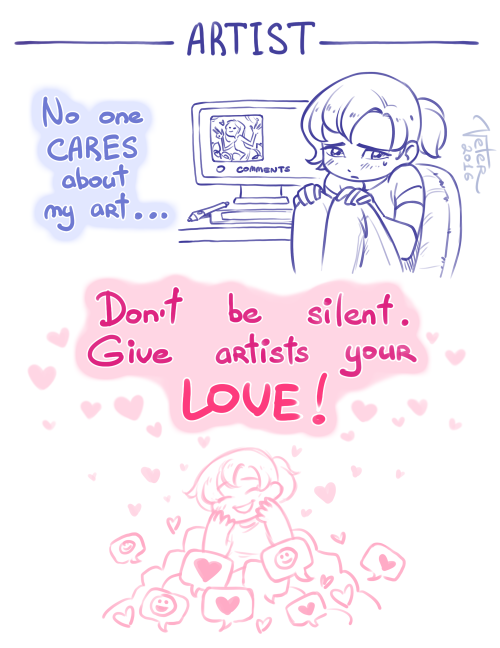
❤ Give love! Spread love! ❤
Go and tell your favorite artist something nice about their art! Go-go-go!


-
 eternalparadisearchive reblogged this · 1 week ago
eternalparadisearchive reblogged this · 1 week ago -
 my-pleasant-good-morning reblogged this · 2 weeks ago
my-pleasant-good-morning reblogged this · 2 weeks ago -
 atsa-politics reblogged this · 2 months ago
atsa-politics reblogged this · 2 months ago -
 lockinthebelltower liked this · 3 months ago
lockinthebelltower liked this · 3 months ago -
 dahdarkscorpion reblogged this · 3 months ago
dahdarkscorpion reblogged this · 3 months ago -
 homucifer-ryotan liked this · 3 months ago
homucifer-ryotan liked this · 3 months ago -
 superbsodiums reblogged this · 4 months ago
superbsodiums reblogged this · 4 months ago -
 bitchidkandidc reblogged this · 4 months ago
bitchidkandidc reblogged this · 4 months ago -
 dad-mom-man-woman reblogged this · 4 months ago
dad-mom-man-woman reblogged this · 4 months ago -
 namelessman2 liked this · 5 months ago
namelessman2 liked this · 5 months ago -
 s-h-y-y-a-n-n-e liked this · 5 months ago
s-h-y-y-a-n-n-e liked this · 5 months ago -
 clara-nox liked this · 5 months ago
clara-nox liked this · 5 months ago -
 annafcivp liked this · 6 months ago
annafcivp liked this · 6 months ago -
 catastrfy liked this · 6 months ago
catastrfy liked this · 6 months ago -
 kittykatchao reblogged this · 7 months ago
kittykatchao reblogged this · 7 months ago -
 kittykatchao liked this · 7 months ago
kittykatchao liked this · 7 months ago -
 maroononthemoon reblogged this · 7 months ago
maroononthemoon reblogged this · 7 months ago -
 white-mexicant liked this · 7 months ago
white-mexicant liked this · 7 months ago -
 fidgetyowl reblogged this · 7 months ago
fidgetyowl reblogged this · 7 months ago -
 imnotverybright reblogged this · 7 months ago
imnotverybright reblogged this · 7 months ago -
 youmaycallmebrian liked this · 7 months ago
youmaycallmebrian liked this · 7 months ago -
 astormrollsin reblogged this · 7 months ago
astormrollsin reblogged this · 7 months ago -
 astormrollsin liked this · 7 months ago
astormrollsin liked this · 7 months ago -
 mybendystraw reblogged this · 7 months ago
mybendystraw reblogged this · 7 months ago -
 ahorseeatingicecream liked this · 7 months ago
ahorseeatingicecream liked this · 7 months ago -
 soniciselectricc liked this · 7 months ago
soniciselectricc liked this · 7 months ago -
 lezbenezer-scrooge reblogged this · 8 months ago
lezbenezer-scrooge reblogged this · 8 months ago -
 lezbenezer-scrooge liked this · 9 months ago
lezbenezer-scrooge liked this · 9 months ago -
 all-the-thoughts-ever-thought liked this · 11 months ago
all-the-thoughts-ever-thought liked this · 11 months ago -
 lightningcritter reblogged this · 11 months ago
lightningcritter reblogged this · 11 months ago -
 lightningcritter liked this · 11 months ago
lightningcritter liked this · 11 months ago -
 madawauchiwa liked this · 11 months ago
madawauchiwa liked this · 11 months ago -
 abby-the-druid liked this · 11 months ago
abby-the-druid liked this · 11 months ago -
 chibiranmaruchan reblogged this · 1 year ago
chibiranmaruchan reblogged this · 1 year ago -
 scorchdragon87 reblogged this · 1 year ago
scorchdragon87 reblogged this · 1 year ago -
 ajavionna reblogged this · 1 year ago
ajavionna reblogged this · 1 year ago -
 metallic-mermaid reblogged this · 1 year ago
metallic-mermaid reblogged this · 1 year ago -
 ilovebostonterriersandcupca-blog liked this · 1 year ago
ilovebostonterriersandcupca-blog liked this · 1 year ago -
 kylawashere22 liked this · 1 year ago
kylawashere22 liked this · 1 year ago -
 pls-readnowayu liked this · 1 year ago
pls-readnowayu liked this · 1 year ago -
 the-candyman-is-here liked this · 1 year ago
the-candyman-is-here liked this · 1 year ago -
 flufflogic liked this · 1 year ago
flufflogic liked this · 1 year ago -
 friendlyneighborhoodevilvillain reblogged this · 1 year ago
friendlyneighborhoodevilvillain reblogged this · 1 year ago -
 southern-gothicc reblogged this · 1 year ago
southern-gothicc reblogged this · 1 year ago -
 yenoodlethings reblogged this · 1 year ago
yenoodlethings reblogged this · 1 year ago -
 my-pleasant-good-morning reblogged this · 1 year ago
my-pleasant-good-morning reblogged this · 1 year ago -
 patti-whack reblogged this · 1 year ago
patti-whack reblogged this · 1 year ago